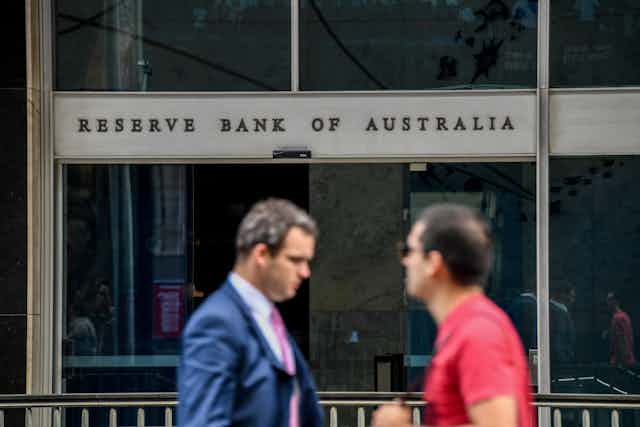Vital Signs is a regular economic wrap from UNSW economics professor Richard Holden (@profholden). Vital Signs aims to contextualise weekly economic events and cut through the noise of the data affecting global economies.
The disturbing trend of persistently low inflation continues, as Wednesday’s data release shows.
Headline inflation was 2.1% for the last 12 months. But the more relevant “underlying” rate came in at 1.9%. This is even below the 2.0% the RBA forecast in May.
Given that the RBA’s target band for inflation is 2-3%, and that inflation has barely touched the bottom of that band over a protracted period, there are implications for monetary policy.
But, before we get to that, the obvious question to ask is: why is inflation so low?
Read more: Vital Signs: booming jobs numbers, but dig deeper and it's not all rosy
One strand of thinking involves the “Philips Curve”. This basically says that low unemployment pushes up wages growth and hence inflation.
We could get into a long discussion of whether the current 5.4% unemployment rate is “low”. And whether the effective rate really is 5.4% given anecdotal evidence about “underemployment”, the impact of recent decisions on penalty rates and minimum wage rises, and the robot revolution as a backdrop to the whole labour market.
But we don’t need to go there. There is barely any evidence of the Philips Curve in the data over the past quarter century, so let’s just reject that theory and move on.
Plausible factors keeping a lid on inflation
Technology. The information technology and internet revolution has made lots of things much cheaper. Take music. Gone are the days of paying A$20-plus for a CD with maybe 16 songs on it. Streaming services like Apple Music and Spotify give access to literally millions of songs for a small monthly fee.
China. The rise of Chinese manufacturing has led to everything from kids’ toys to cell phones being produced vastly more cheaply than if those things were manufactured with higher-cost labour.
Globalisation and trade. The world has become radically more connected, and so have company supply chains. This not only allows access to lower-cost manufacturing but also leads to better specialisation through the principle of comparative advantage. This means that high-labour-cost countries like Australia can specialise in other components of goods and services, get better at producing those components, and reduce overall costs further.
Wages. Wage growth has been subdued for a long time now. Since labour costs are an important component of many goods and services, this has served to tame inflation. One potential reason for low wage growth is that automation sits as a background threat to human labour. If labour costs get too high then processes get automated, which serves to keep wages in check.
Leverage and consumer spending. A final factor is that given how heavily indebted Australian households are –largely through mortgage debt – they simply don’t have a lot of discretionary income. This limits consumer spending and makes price rises in the retail sector less likely.
These factors don’t look likely to change any time soon – with the possible exception of trade due to the Trump trade war. But even if that escalates dramatically it will shrink economic activity, further depressing prices.
Read more: Explainer: why some economists think the RBA should drop its inflation target
So we have long-run, persistently low inflation. Is that a problem?
The major concern is that it could turn into deflation, although that doesn’t look terribly likely right now.
If, however, there was another significant economic downturn then deflation is a very real prospect. That would raise the spectre of Japan’s experience of the 1990s where deflation caused people to hoard money, severely contracting economic activity.
But for now the real impact of low inflation is on the RBA.
Faced with inflation below its target band for an extended period, the standard response would be to cut interest rates. The RBA is clearly worried about doing this.
One reason is housing prices – the RBA is worried about further fuelling the bubble.
With housing prices easing, this may become less of a concern, although household debt levels remain extremely high. Not encouraging households to become further indebted seems like a reasonable concern.
A second reason the RBA may be nervous about cutting rates is that it doesn’t have very far to go with the cash rate at 1.50%. If there is another major economic downturn then the RBA wants to have some firepower left to respond.
If short-term rates were already near zero then the only tools available to the central bank would be non-standard measures such as quantitative easing. That would be uncharted territory for the RBA, which seems reticent to explore that territory.
So, as with economic growth and wage rises, the RBA response seems to involve crossing as many fingers and toes as possible and to publicly proclaim that things are looking good, but may take a while.
We will get a better look into how that strategy is going when wage price index figures are released mid-August.

